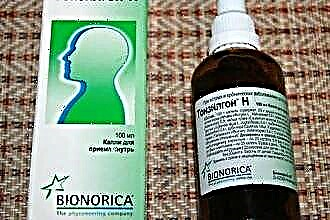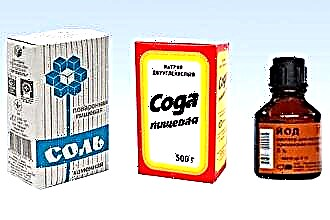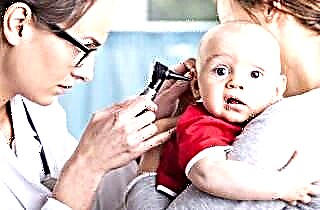The use of nebulizers for the administration of drugs into the respiratory tract ensures their maximum therapeutic efficacy. WHO studies show that 98% of the active substance in this case gets to the affected area. In addition, it also contributes to financial savings - the reduction in dispersion and loss of a pharmacological agent allows a much smaller amount to be used to obtain the same result. This leads to the fact that inhalation with a nebulizer for angina is the preferred method of administering medicinal compounds.
Features of using nebulizers
 The drugs that are used to treat angina are very different in pharmacological classes, in active ingredients and in consistency. Depending on these characteristics and their combination, certain types of nebulizers are suitable for inhalation of certain medicinal compounds. According to the principle of operation, there are 3 types of such devices: compressor, ultrasonic and membrane.
The drugs that are used to treat angina are very different in pharmacological classes, in active ingredients and in consistency. Depending on these characteristics and their combination, certain types of nebulizers are suitable for inhalation of certain medicinal compounds. According to the principle of operation, there are 3 types of such devices: compressor, ultrasonic and membrane.
Compressor nebulizers are the simplest option. Here, an aerosol suspension of the drug is created by a stream of air under pressure.
On the one hand, the noise of the compressor, the need to connect to the mains and the rather large dimensions of the device complicate the use of this model. But on the other hand, the relative simplicity of the design makes it possible to use almost all types of solutions for inhalation here.
An ultrasonic nebulizer creates an aerosol from a medicinal substance by acting on it with ultrasonic waves. This device is compact, quiet and easy to use. But this ultrasonic "stirring" heats up the drug, and in some drugs (for example antibiotics or hormonal agents), an increase in temperature causes the destruction of the internal molecular structure. Therefore, these types of drugs cannot be used in ultrasonic nebulizers.
The membrane or mesh nebulizer is the most modern model. Here, a dispersed suspension of a drug is formed by feeding it onto a vibrating membrane with microscopic holes. Passing through them, the solution becomes an aerosol. These models are comfortable to wear and use, do not heat the preparation when spraying, but have a rather high cost. In addition, poorly filtered or viscous substances cannot be used here - this will clog the holes in the membrane.
Summary table on the use of drugs in different types of nebulizers:
| A drug | Compressor | Ultrasonic | Membrane |
| Antibiotics | - | + | + |
| Antiseptics | + | + | + |
| Non-steroidal anti-inflammatory | + | + | + |
| Mineral waters without gas | + | + | + |
| Soda and salt solutions | + | + | - |
| Infusions and decoctions of medicinal herbs | + | + | - |
| Essential and aromatic oils | depending on the model | - | - |
| Bronchodilators and mucolytics | + | + | + |
| Glucocorticosteroids | + | - | + |
Pharmacological preparations
Antibiotics
Angina is an inflammation of the pharyngeal tonsils, or tonsillitis. The nature of this disease is infectious and the cause of the development of inflammatory reactions on the mucous membrane in most cases is bacteria. Antibiotics are a class of drugs specially created to fight pathogenic bacteria, and therefore it is they who are the basis of therapy for angina. Among the most common antibiotics administered by means of a nebulizer are gentamicin and Fluimucil-antibiotic IT.
Important! Before using these or those antibiotics, be sure to make sure that the patient does not suffer from individual intolerance to a particular drug.
Antiseptics
 Preparations belonging to the class of antiseptic agents are also capable of destroying pathogenic bacteria. But formally, they do not belong to antibiotics, since they have a different chemical origin.
Preparations belonging to the class of antiseptic agents are also capable of destroying pathogenic bacteria. But formally, they do not belong to antibiotics, since they have a different chemical origin.
Among the antiseptic substances that are used for inhalation with angina with a nebulizer, solutions are most often used:
- chlorophyllipt;
- dioxidine;
- furacilin.
Non-steroidal anti-inflammatory drugs
Such drugs are used for angina to reduce the severity of inflammatory processes on the mucous membrane. Of these drugs for inhalation, the most commonly used agent is Cromohexal, which simultaneously has an antihistamine effect.
Home remedies
Mineralized water
The task pursued by inhalation with a nebulizer using mineral waters is to moisturize and soften the throat mucous membrane affected by the inflammatory process. In addition, the water liquefies and gently flushes away the purulent deposits that form on the surface of the tonsils. You can inhale with mineral water 5-7 or more times a day, and for this, such well-known products as Narzan or Essentuki are quite suitable.
For inhalation with a nebulizer, only non-carbonated mineral waters should be used.
Soda and salt solutions
The solution for inhalation can contain only baking soda or only kitchen salt, but it is better if both of these compounds are present in the liquid. The proportion of their content is 1 tbsp. a spoonful of salt and 1 tbsp. a spoonful of soda per 1 liter of water. Ordinary salt can be replaced with sea salt, but not iodized - iodine potassium compounds irritate the mucous membrane. Be sure to make sure that both salt and soda are completely dissolved - this will protect the internal structures of the nebulizer from damage, and the mucous throats from microtraumatization. For the best therapeutic effect, drop 10 drops of iodine into 1 liter of the solution.
Infusions and decoctions of medicinal herbs
 Medicinal plant preparations are widely used as an adjuvant therapy for angina and, in particular, are administered by inhalation. To use these liquids in nebulizers, you must first remove any solid components from them.
Medicinal plant preparations are widely used as an adjuvant therapy for angina and, in particular, are administered by inhalation. To use these liquids in nebulizers, you must first remove any solid components from them.
The general rule for all of the solutions listed below: the liquid must cool on its own, then it must be passed through several layers of gauze filter, and only then filled into the nebulizer.
Schemes for the preparation of mono-solutions for inhalation:
- 1 tbsp. a spoonful of any herbal remedy (sage, St. John's wort, oregano, yarrow, etc.) for 1 glass of boiling water;
- 2 tbsp. spoons of calendula in 1 glass of boiling water;
- 2 tbsp. tablespoons of dry raspberry leaves in 1 cup of boiling water;
- 5 tbsp. tablespoons of horsetail for 0.5 liters of boiling water;
- 2 tbsp. spoons of calamus root in 1 glass of water, leave for 4 hours, boil for 5 minutes;
- 2 tbsp. tablespoons of burnet root in 1 glass of water, boil for 30 minutes in a water bath, dilute 2 times with water;
- 4 tbsp. tablespoons of elderberry flowers in 1 glass of water, boil for 5 minutes;
- 2 tbsp. tablespoons of eucalyptus leaves in 1 glass of water, boil for 10 minutes in a water bath.
Collection of phytopreparations
It is also useful to be inhaled with angina with mixtures of medicinal herbs - a combination of different therapeutic effects that different plants have, potentiate the total therapeutic effect. Here are some recipes for such fees:
- 15 g mullein + 15 g elderflower flowers per 1 liter of boiling water;
- 1 g of thermopsis + 20 g of primrose per 1 cup of boiling water;
- 10 g coltsfoot + 10 g rosemary + 10 g plantain for 1 glass of boiling water;
- 25 g of chamomile + 25 g of pine buds for 0.5 liters of boiling water;
- 1 tbsp. a spoonful of calamus root + 1 tbsp. spoon of oak bark per 1 liter of water, boil for 15 minutes, add 1 tbsp. a spoonful of nettle + 1 tbsp. a spoonful of sage, leave for half an hour.

Ready phytopreparations
With a lack of time for self-preparation of solutions of medicinal plants, it is convenient to use ready-made preparations that are easy to purchase in pharmacies.
For inhalation administration using a nebulizer, such pharmacological agents based on herbal ingredients as Tonsilgon N, Rotokan and Romazulan are intended.
Essential and aromatic oils
These compounds have antiseptic, anti-inflammatory and softening effects on the mucous membrane of the throat with angina. But their introduction by inhalation using a nebulizer is not always possible. Only some compressor models (and even then not all!) Of these devices are able to create a dispersed air suspension from essential oil. Ultrasonic nebulizers do not have enough power for this, and in mesh nebulizers, high-viscosity liquid clogs the holes.
Before using essential oils, read the instructions and make sure that this class of medicinal substances can be used in your nebulizer.
Other drugs
Sometimes other medicinal substances are used for angina, for example, bronchodilators (berodual, berotek, atrovent), mucolytics (lazolvan, ACC, ambrobene) or glucocorticoids (pulmicort, dexamethasone, hydrocortisone).
Only an otolaryngologist has the right to prescribe the inhalation use of these compounds after a thorough examination of the patient.
In most cases, these drugs are used if the inflammation of the tonsils is accompanied by other pathologies and complications - bronchial obstruction, inflammatory lesions of the respiratory tract with the formation of mucus, allergic disorders.




